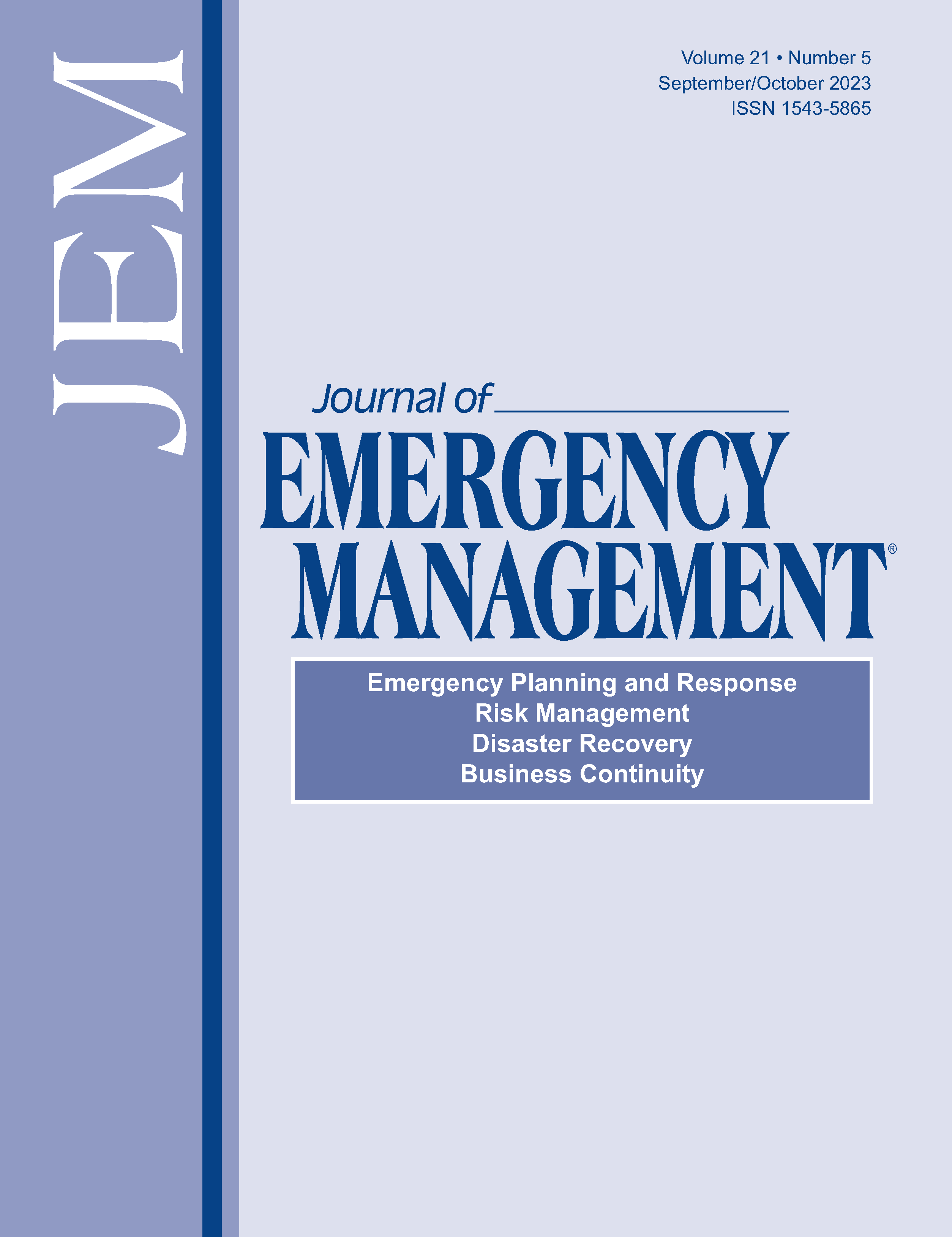Project APRED: A web-based data analytics platform for supporting community disaster resilience
DOI:
https://doi.org/10.5055/jem.0735Keywords:
computational science, data analytics, information visualization, human–computer interaction, disaster planning, disaster response, community resilienceAbstract
In this paper, we introduce the Analysis Platform for Risk, Resilience, and Expenditure in Disasters (APRED)—a disaster-analytic platform developed for crisis practitioners and economic developers across the United States (US). APRED provides practitioners with a centralized platform for exploring disaster resilience and vulnerability profiles of all counties across the US. The platform comprises five sections including: (1) Disaster Resilience Index, (2) Business Vulnerability Index, (3) Disaster Declaration History, (4) County Profile, and (5) Storm History sections. We further describe our end-to-end human-centered design and engineering process that involved contextual inquiry, community-based participatory design, and rapid prototyping with the support of US Economic Development Administration representatives and regional economic developers across the US. Findings from our study revealed that distributed cognition, content heuristic, shareability, and human-centered systems are crucial considerations for developing data-intensive visualization platforms for resilience planning. We discuss the implications of these findings and inform future research on developing sociotechnical visualization platforms to support resilience planning.
References
UNISDR: World conference on disaster reduction. International Strategy for Disaster Reduction. 2005. Available at https://www.unisdr.org/2005/wcdr/intergover/official-doc/L-docs/Hyogoframework-for-action-english.pdf. Accessed January 5, 2021.
Weather Disasters and Costs: n.d. Available at https://coast.noaa.gov/states/fast-facts/weather-disasters.html. Accessed January 20, 2021.
Smith AB: 2020 US billion-dollar weather and climate disasters in historical context: NOAA. Climate.gov. 2021. Available at https://www.climate.gov/news-features/blogs/beyond-data/2020-us-billiondollar-weather-and-climate-disasters-historical. Accessed January 5, 2021.
Cutter SL, Burton CG, Emrich CT: Disaster resilience indicators for benchmarking baseline conditions. J Homel Secur Emerg Manag. 2010; 1547-7355. DOI: 10.2202/1547-7355.1732.
Zimmerman J, Forlizzi J, Evenson S: Research through design as a method for interaction design research in HCI. In Proceedings of the SIGCHI Conference on Human Factors in Computing Systems. 2007: 493-502.
Card M: Readings in Information Visualization: Using Vision to Think. Burlington, MA: Morgan Kaufmann, 1999.
Combaz E: What is disaster resilience? GSDRC. 2015. Available at https://gsdrc.org/topic-guides/disaster-resilience/concepts/what-isdisaster-resilience/. Accessed January 5, 2021.
Thomas J, Bohn S, Brown J, et al.: Information visualization: Data infrastructure architectures. 1994. Available at https://ieeexplore.ieee.org/abstract/document/336967/authors#authors. Accessed January 20, 2021.
Dietrich JC, Dawson CN, Proft JM, et al.: Real-time forecasting and visualization of hurricane waves and storm surge using SWAN + ADCIRC and FigureGen. In Computational Challenges in the Geosciences. New York, NY: Springer, 2013: 49-70.
Cimellaro GP, Reinhorn AM, Bruneau M: Framework for analytical quantification of disaster resilience. 2010. Available at http://www.eng.buffalo.edu/~bruneau/Engineering%20Structures%202010%20Cimellaro%20Reinhorn%20Bruneau.pdf. Accessed January 5, 2021.
Ribes D, Lee CP: Sociotechnical studies of cyberinfrastructure and e-research: Current themes and future trajectories. Comput Supported Coop Work. 2010; 19(3-4): 231-244.
Karen H, Sandra J: Contextual inquiry: A participatory technique for system design. In Participatory Design. Boca Raton, FL: CRC Press, 2017: 177-210.
Miles SB: Modeling and geo-visualizing the role of infrastructure in community disaster resilience. Int Efforts Lifeline Earthq Eng. 2014: 27-34.
Crawl D, Block J, Lin K, et al.: Firemap: A dynamic data-driven predictive wildfire modeling and visualization environment. Procedia Comput Sci. 2017; 108: 2230-2239.
Johansson J, Opach T, Glaas E, et al.: VisAdapt: A visualization tool to support climate change adaptation. IEEE Comput Grap Appl. 2017; 37(2): 54-65.
Kurwakumire E, Muchechetere P, Kuzhazha S, et al.: Geographic information and geo-visualisation in support of disaster resilience. 2019. Available at https://www.proc-int-cartogr-assoc.net/2/68/2019/. Accessed January 20, 2021.
Li K, Lam NS, Qiang Y, et al.: A cyberinfrastructure for community resilience assessment and visualization. Cartogr Geogr Inform Sci. 2015; 42(Suppl. 1): 34-39.
Swaab RI, Postmes T, Neijens P, et al.: Multiparty negotiation support: The role of visualization’s influence on the development of shared mental models. J Manag Inform Syst. 2002; 19(1): 129-150.
Burley D, Ashburn V: Information visualization as a knowledge integration tool. J Knowl Manag Practice. 2010; 11(4): 1.
Virzi RA: Refining the test phase of usability evaluation: How many subjects is enough? Hum factors. 1992; 34(4): 457-468.
Virginia B, Victoria C, Nikki H, et al.: Thematic analysis. In Pranee L (ed.): Handbook of Research Methods in Health Social Sciences. Singapore: Springer, 2018. 1-18. DOI: 10.1007/978-981-10-2779-6_103-1.
Published
How to Cite
Issue
Section
License
Copyright 2007-2025, Weston Medical Publishing, LLC and Journal of Emergency Management. All Rights Reserved.






